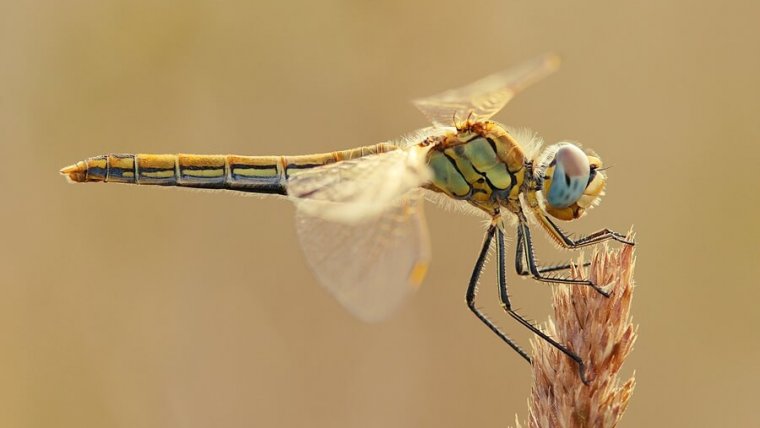
Dragonflies are absolutely amazing insects and furthermore really photogenic. There are more than 5000 species of dragonflies which live all over the world. The amazing and unique insect has the ability to fly straight up and down, to hover like a helicopter and to catch their insect prey while flying. Dragonflies were some of the first winged insects to evolve, 300 million years ago. Now let me tell you some tips and tricks to get amazing dragonfly images.
Table of Contents
First of all, you need to find a good location in order to photograph a dragonfly. You can usually find them around lakes, ponds, streams, and wetlands because they need water to lay their eggs in it. So try to find a pond, a stream or a lake and you will automatically find dragonflies. But mind that dragonflies only can be found between spring and autumn, furthermore they are only active when it is warm and sunny, but that doesn’t mean that you can’t spot them on cloudy days. If you find a dragonfly on a cold morning in October, it will be much easier to approach them, because it is harder for them to escape if it’s cold.
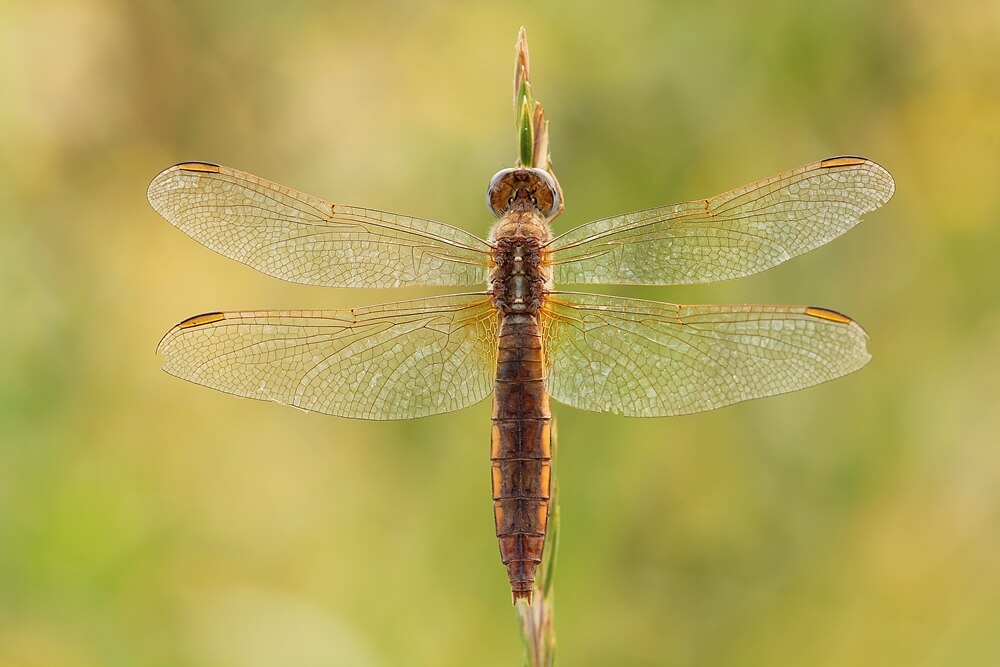 Camera Body: Canon 550D, Lens: Tamron 180, Shutter Speed: 1/2, Aperture: f 9, Focal Length: 180 mm, ISO Speed: 100
Camera Body: Canon 550D, Lens: Tamron 180, Shutter Speed: 1/2, Aperture: f 9, Focal Length: 180 mm, ISO Speed: 100
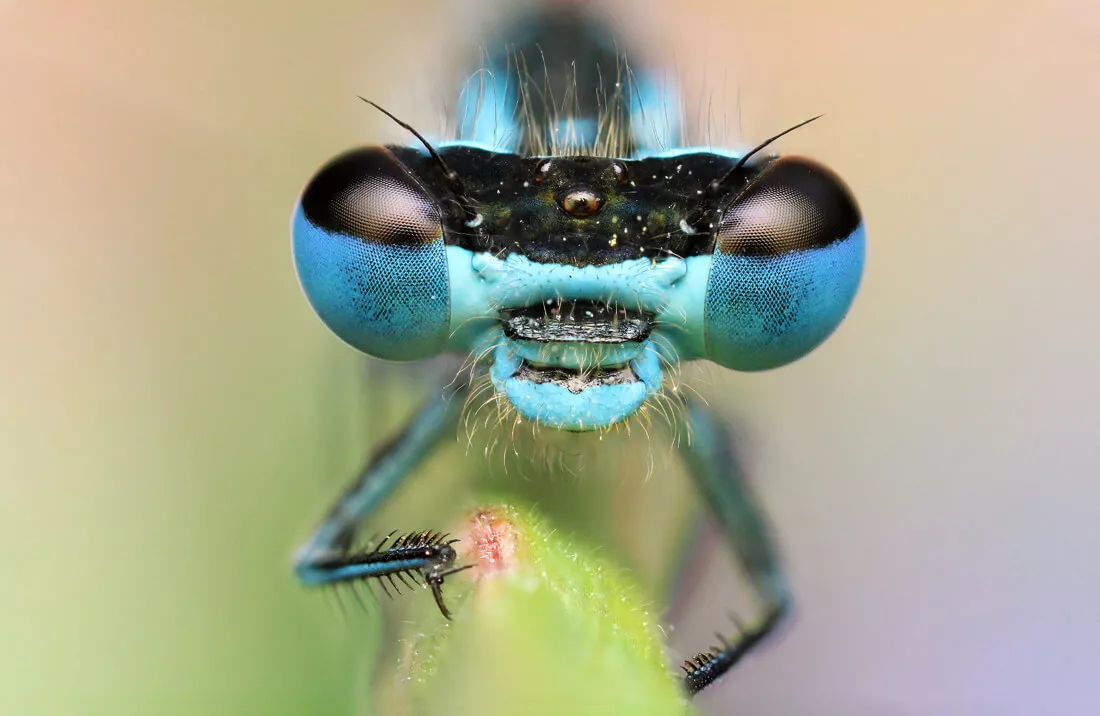
Camera Body: Canon 60D, Lens: Canon Mp-E, Shutter Speed: 1/200, Aperture: f 5.6, Focal Length: 65 mm, ISO Speed: 800
In the early morning hours you will have the best light and the softest colors. In the late afternoon just before sunset, you will again have magical light and smooth colors. Dragonflies are also usually less active in the morning and in the afternoon, so if you find a resting dragonfly you will have enough time to photograph it from different perspectives. They can’t fly if it is too cold, so in the morning when the temperatures are low and the insects are still asleep, the dragonflies will not move and you can make the best possible photo of that insect.
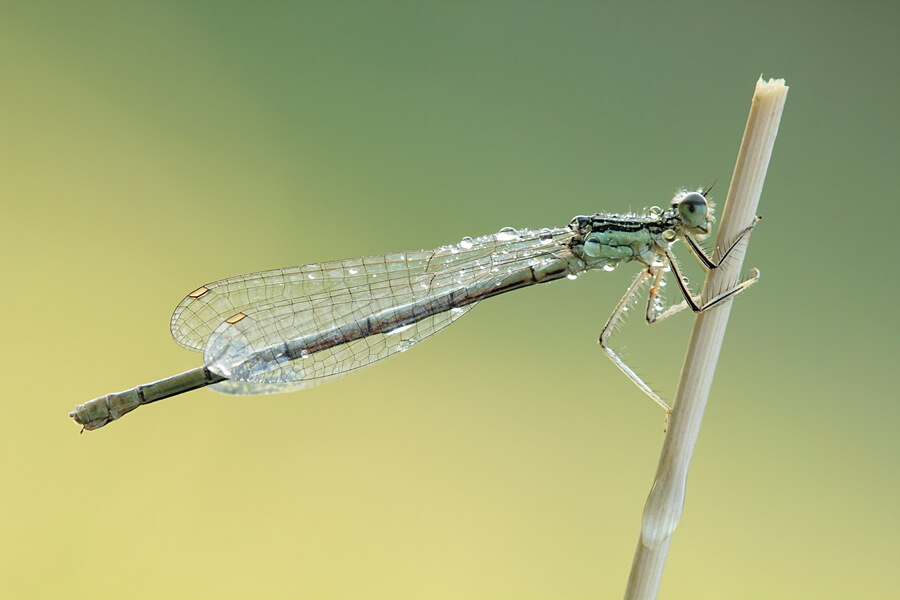
Camera Body: Canon 550D, Lens: Tamron 180, Shutter Speed: 1/25, Aperture: f 7.1, Focal Length: 180 mm, ISO Speed: 200
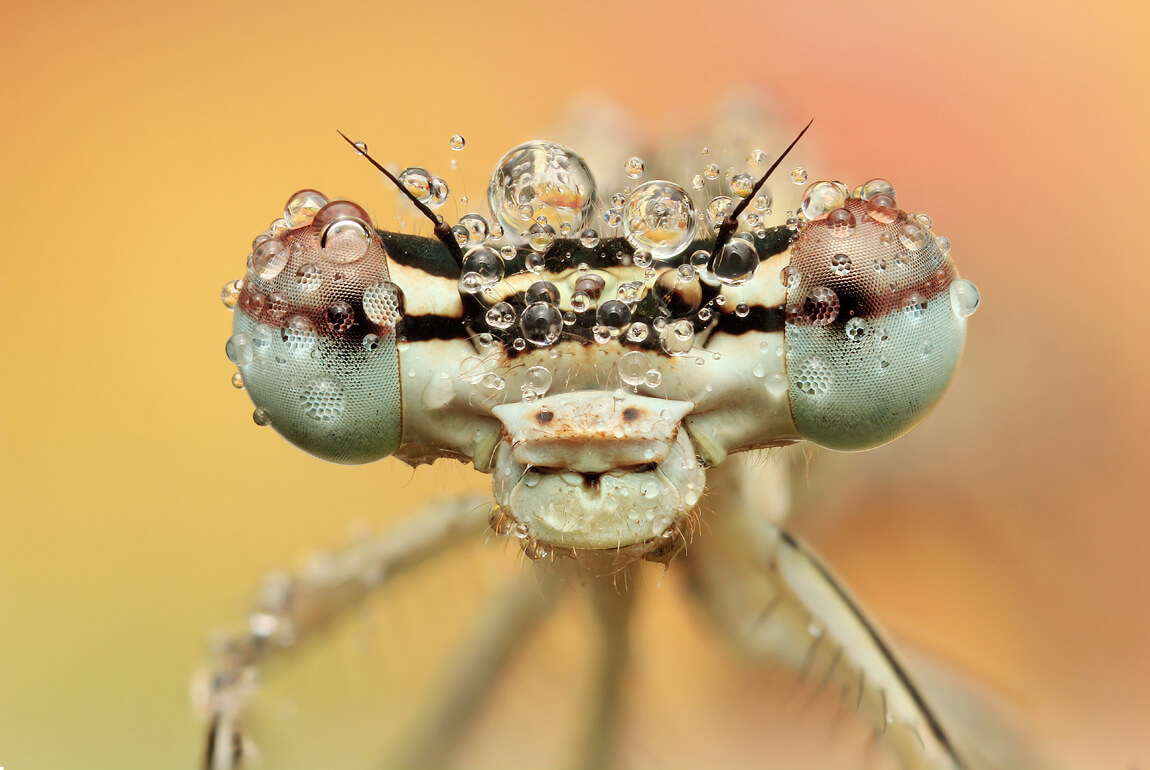 Camera Body: Canon 550D, Lens: Canon Mp-E, Shutter Speed: 1/125, Aperture: f 10, Focal Length: 65mm, ISO Speed: 200
Camera Body: Canon 550D, Lens: Canon Mp-E, Shutter Speed: 1/125, Aperture: f 10, Focal Length: 65mm, ISO Speed: 200
The higher the ISO, the more noise you will have in your image and the less sharp your dragonfly image will be. Don’t set your ISO number too high, because this will cause digital noise and grain in your images and this digital noise will reduce image sharpness. If you shoot in automatic mode I would suggest setting the maximum ISO sensitivity to 1600. Nowadays most DSLRs are able to provide good quality images at ISOs up to 1600. But remember: The lower the ISO number, the more light will be required. It’s all about compensating the ISO values for sharp images, something that photographers are doing nowadays, because on the one hand they want to keep their ISO as low as possible for sharp & high-quality images and on the other hand, they also need a fast shutter speed to receive sharp images. If you cannot alter your ISO values, there is always the possibility to remove the ISO noise afterwards, within few steps you are able to remove the noise in Photoshop.
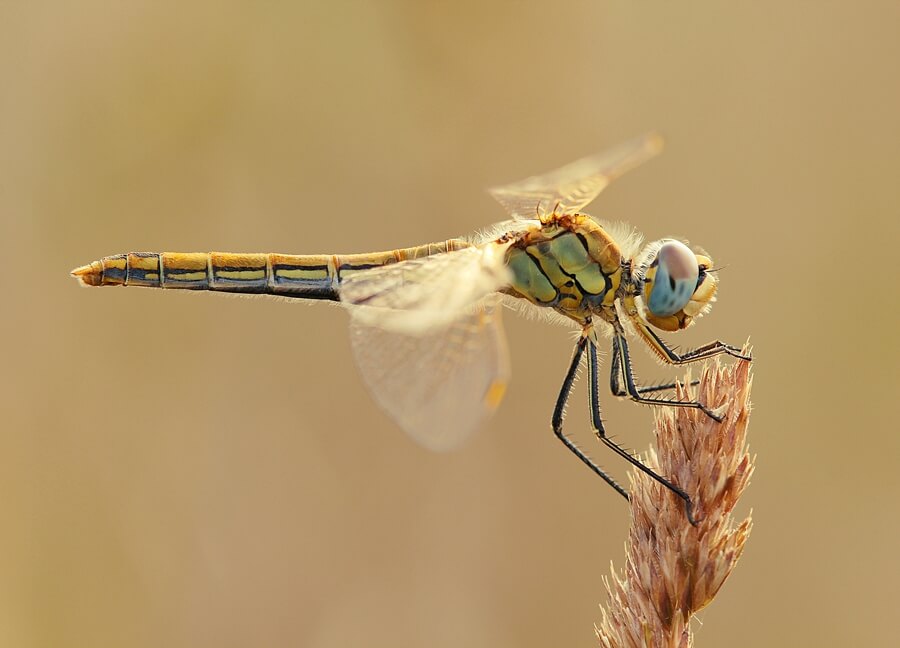
Camera Body: Canon 550D, Lens: Tamron 180, Shutter Speed: 1/50, Aperture: f 7.1, Focal Length: 180 mm, ISO Speed: 100
So, make sure you get the right equipment before you start shooting dragonflies and bring along much patience, as successful shots sometimes depend on a great deal of patience. As always, I really hope you have found the tips and ideas in this article useful.
Of course, a macro lens with a wide aperture will give you the possibility to photograph them also in low light conditions. There are many great macro lenses on the market, for example, the Canon 180mm f3,5 would be a really great choice, which has a brilliant image sharpness. The Canon EF-S 60mm f2,8 would be more budget friendly and will also bring a great image quality. But mind that you may need a high focal length lens in order to avoid detection. If you want to get extreme macros, the best choice would be the Canon Mp-E, it’s just the best lens for the extreme. It is extremely sharp and its maximum aperture is f/2.8, so it’s perfect for low light conditions and to receive a smooth & clear background. The only disadvantage is that this lens is pretty expensive, as it costs around $1,000, but quality has its price as we know. But you also could use a snap-on Lenses in order to get extreme macros. They are used as an adapter which can be mounted on your actual macro lens. Using a Snap-On Lens such as the “Raynox DCR-250” will be the right choice if you prefer low budget extreme macro photography. It will produce rich and razor sharp macro images and it has a low weight, small enough to fit in any photo bag and works perfectly with any macro lens.
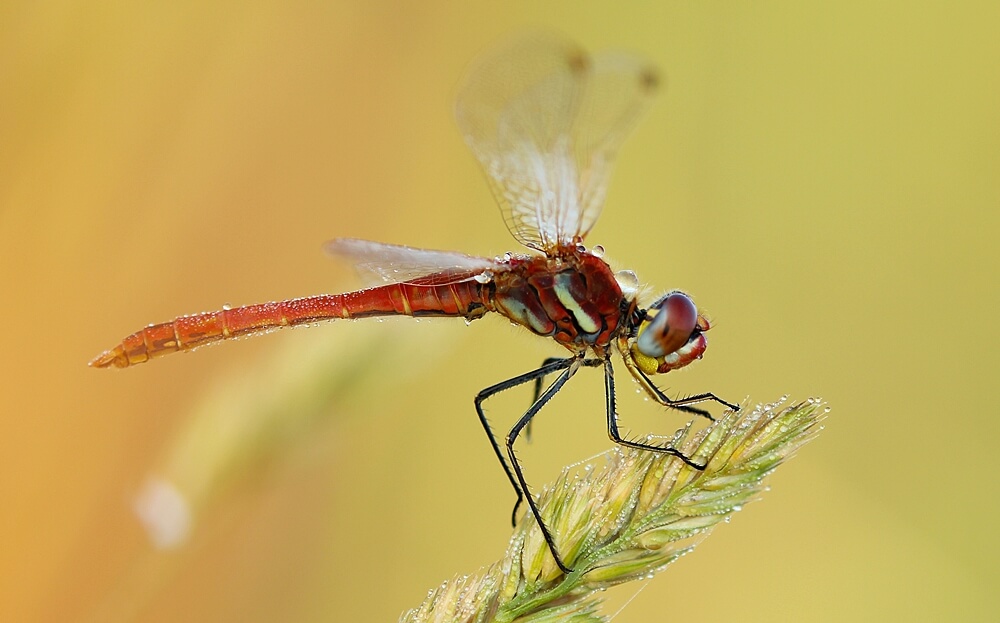 Camera Body: Canon 550D, Lens: Tamron 180, Shutter Speed: 1/200, Aperture: f 3.5, Focal Length: 180 mm, ISO Speed: 100
Camera Body: Canon 550D, Lens: Tamron 180, Shutter Speed: 1/200, Aperture: f 3.5, Focal Length: 180 mm, ISO Speed: 100
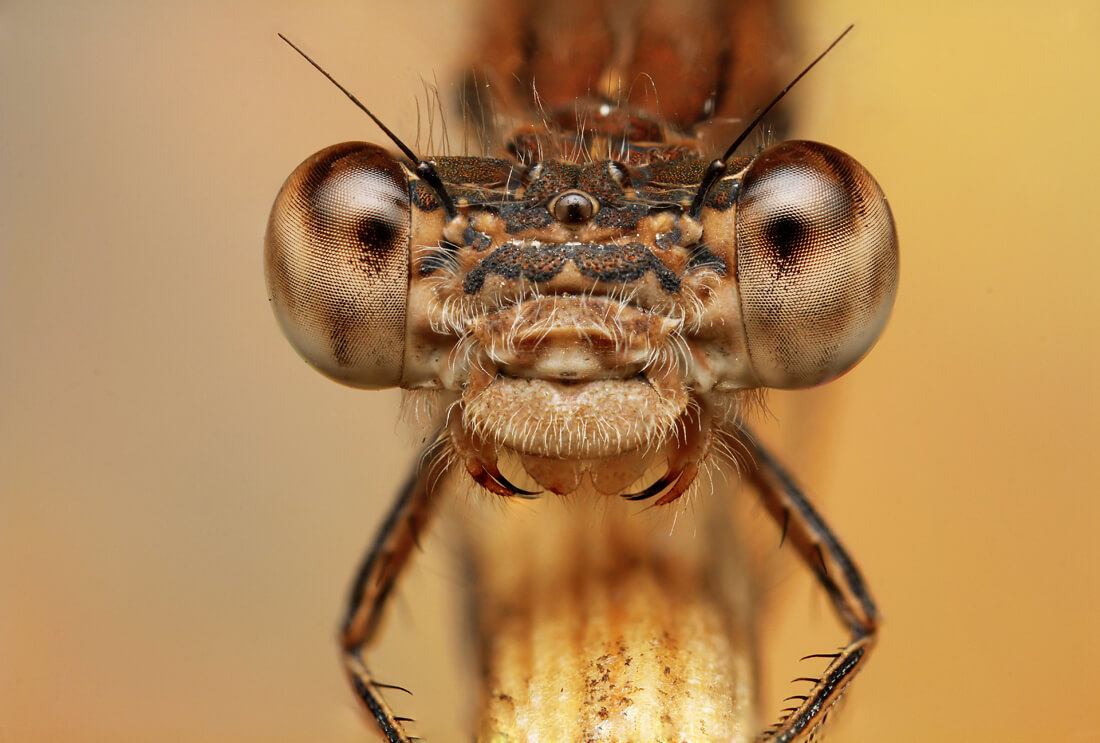 Camera Body: Canon 600D, Lens: Tamron 180, Shutter Speed: 1/160, Aperture: f 6.3, Focal Length: 180 mm, ISO Speed: 200
Camera Body: Canon 600D, Lens: Tamron 180, Shutter Speed: 1/160, Aperture: f 6.3, Focal Length: 180 mm, ISO Speed: 200
Dragonflies have really good eyes and can see very well. So try to approach the dragonfly slowly in order to avoid detection. Make sure you set the right settings already before you approach, so you can concentrate on the dragonfly in case it tries to escape or to move.
By limiting the amount of time in which shutter happens to be open, the less chances you have to get unwanted movement at your scene. Set the fastest shutter speed possible to maximize sharpness.
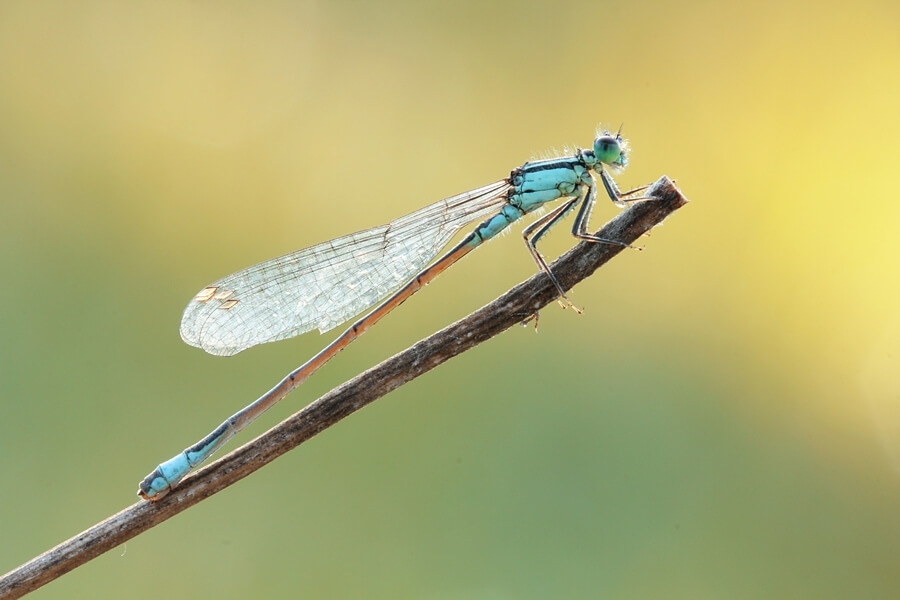 Camera Body: Canon 550D, Lens: Tamron 180, Shutter Speed: 1/4, Aperture: f 18, Focal Length: 180 mm, ISO Speed: 200
Camera Body: Canon 550D, Lens: Tamron 180, Shutter Speed: 1/4, Aperture: f 18, Focal Length: 180 mm, ISO Speed: 200
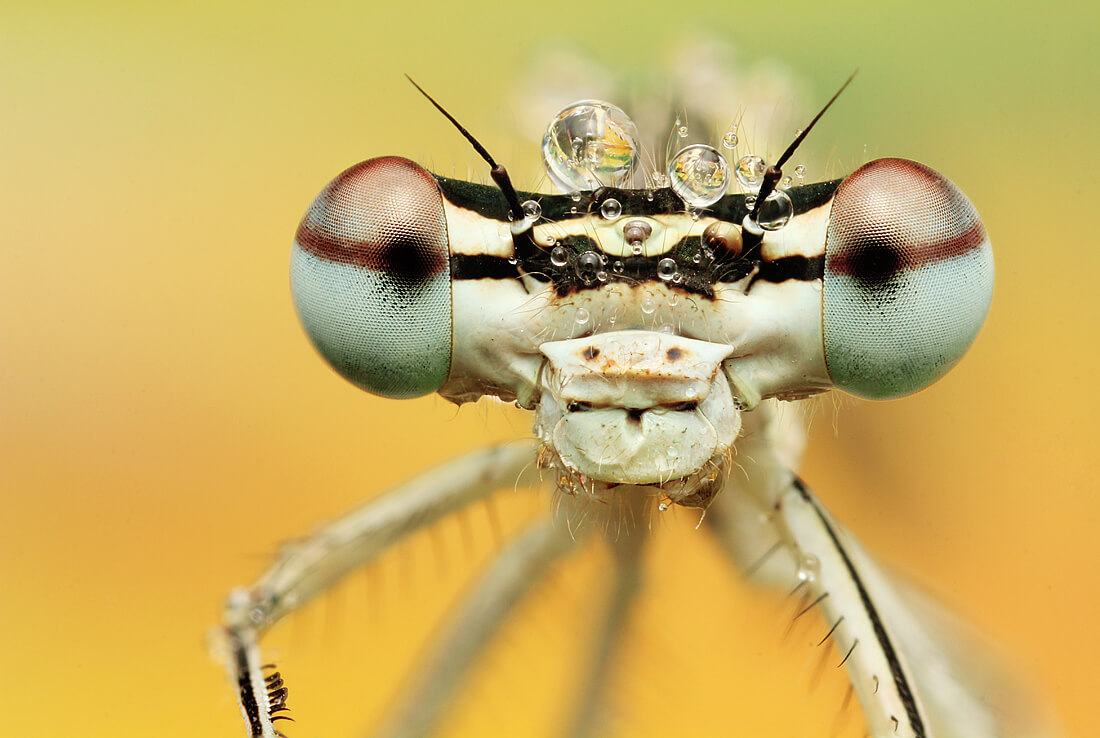 Camera Body: Canon 550D, Lens: Canon Mp-E, Shutter Speed: 1/125, Aperture: f 10, Focal Length: 65mm, ISO Speed: 200
Camera Body: Canon 550D, Lens: Canon Mp-E, Shutter Speed: 1/125, Aperture: f 10, Focal Length: 65mm, ISO Speed: 200
In case your camera is compatible with live view mode, you should definitely turn it on as Live View can be a really useful tool if you want to photograph dragonflies. It will grant a precise control since you can smoothly zoom in to check the image’s sharpness and to visualize where the focus point happens to be. I would recommend turning off your autofocus because macro lenses often have problems to focus on the right point. Therefore, under live view mode, you can quickly change the focus point without much hassle by using the manual focus ring of the lens. It’s really important to set your focus on the eyes when photographing dragonflies.
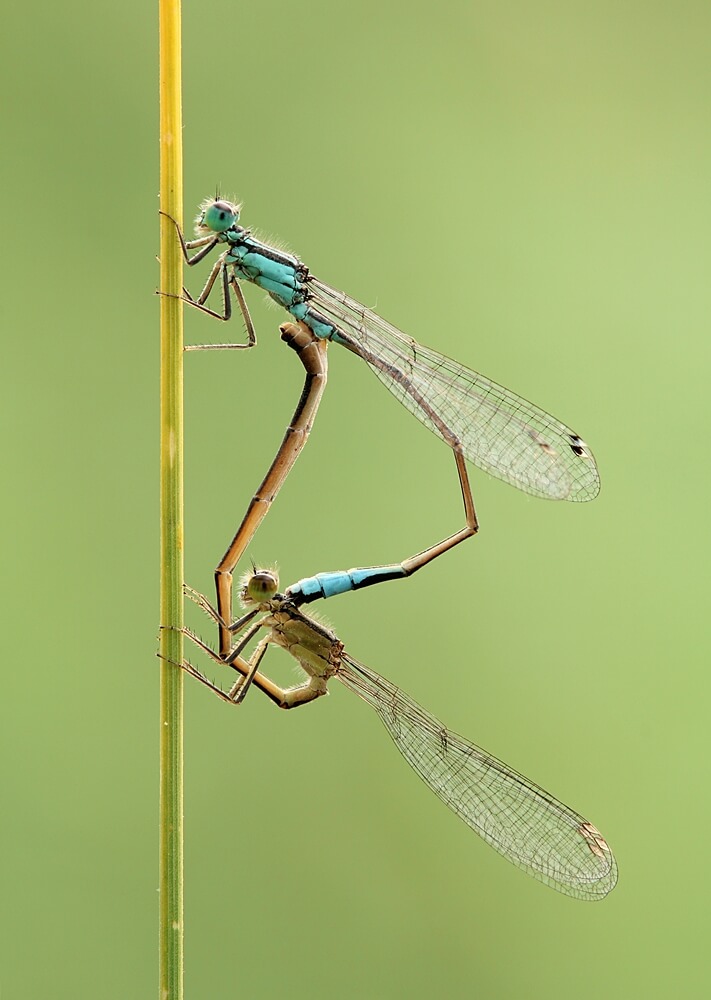 Camera Body: Canon 550D, Lens: Tamron 180, Shutter Speed: 1/6, Aperture: f 9, Focal Length: 180 mm, ISO Speed: 200
Camera Body: Canon 550D, Lens: Tamron 180, Shutter Speed: 1/6, Aperture: f 9, Focal Length: 180 mm, ISO Speed: 200
Wide aperture lenses are helpful if you want to isolate your main subject from everything else, for blurring the background and if you want to get a smooth and clear background. So choose a wide aperture lens for a soft and clean background.
As always, I really hope you have found the tips and ideas in this article useful!
Thanks for reading & see you next time!
All images by Julian Rad.
Comments (0)
There are no comments yet.